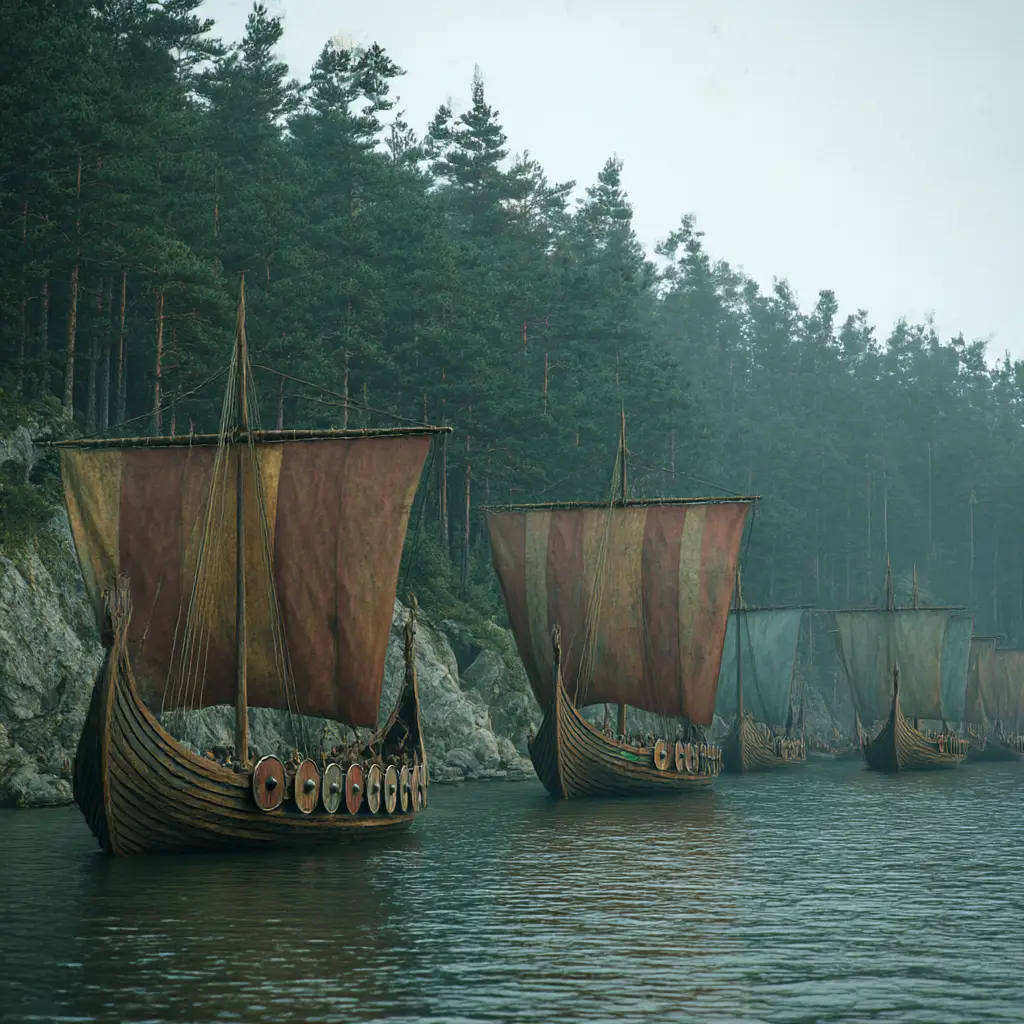The Vikings and the Battle of Svolder – A Turning Point in Norse Power Struggles
The Battle of Svolder was a significant naval clash that took place around the year 999 or 1000 AD, involving key Viking leaders in the Baltic Sea. It marked a dramatic episode in Norse history, where shifting alliances and political rivalries among Scandinavian rulers shaped the future of the region. The battle is best known for the downfall of King Olaf Tryggvason of Norway, a bold and ambitious Viking who had sought to unify his kingdom under Christianity.
Lead up to the Battle
By the late 10th century, Norway was undergoing a turbulent transformation. Olaf Tryggvason, who had spent his youth as a Viking raider and mercenary, returned to Norway in 995 and claimed the throne. Charismatic and forceful, Olaf began a campaign of Christianisation and centralisation, which met with both success and fierce resistance. His assertive policies, especially his efforts to convert pagan chieftains and his expansionist ambitions, alarmed neighbouring rulers.
His actions led to the formation of a powerful alliance against him, consisting of:
King Sweyn Forkbeard of Denmark
King Olof Skötkonung of Sweden
Eirik Hákonarson, the powerful Norwegian earl of Lade and a former ally of the Danes
These leaders, all of Viking heritage and power, united to halt Olaf’s growing influence in the region.
The Ambush at Svolder!
The Battle of Svolder was not a conventional engagement but a well-planned ambush. Olaf Tryggvason was returning from a diplomatic mission in Wendland (modern-day Poland), sailing with a modest fleet of ships. His enemies lay in wait near the island of Svolder, believed to be in the western Baltic Sea.
Olaf, unaware of the trap, sailed into the ambush with a fleet far smaller than that of his opponents. As he entered the straits, the allied fleet attacked.
The Battle
Olaf’s flagship, the Ormrinn Langi (The Long Serpent), was a massive and famously built warship. He positioned his fleet in a defensive formation, with the Long Serpent at the centre. As the allied fleets advanced, they attacked the smaller ships first, gradually forcing Olaf’s forces to consolidate aboard the Long Serpent.
Despite being heavily outnumbered, Olaf and his men fought with courage and determination. The battle turned into a fierce boarding action, with wave after wave of enemy warriors storming the Norwegian ships. Olaf personally led the defence, reputedly standing tall on the deck of his ship, refusing to surrender.
The Fate of Olaf Tryggvason
Olaf’s exact fate remains a mystery and subject to legend. As the Long Serpent was overwhelmed, it is said that Olaf threw himself into the sea, choosing death over capture. Some versions of the saga suggest he drowned, while others claim he escaped and lived in hiding. Regardless of the truth, Olaf disappeared from history after the battle.
Aftermath and Historical Significance
With Olaf’s death or disappearance, Norway’s independence was weakened. The victors divided control of the kingdom, with Eirik Hákonarson ruling parts of Norway under Danish authority. The battle marked the end of Olaf’s attempts to unify and Christianise Norway by force, although Christianity would continue to spread over the following decades.
The Battle of Svolder is a compelling example of Viking-era power struggles, where personal ambition, political alliances, and maritime warfare determined the fate of kings and nations. It also highlights the transitional nature of the Viking Age, as Norse society moved from pagan warrior culture to Christian kingdoms with growing central authority.
The Battle Saga and Song
The battle features prominently in Norse sagas such as Heimskringla by Snorri Sturluson, where it is recounted in vivid detail. These stories preserved the legacy of Olaf Tryggvason as a brave and tragic figure—an archetype of the heroic Viking king who defied overwhelming odds.
The tale of the Long Serpent and Olaf’s final stand continues to capture the imagination, symbolising both the end of an era and the relentless spirit of the Viking seafarers.



